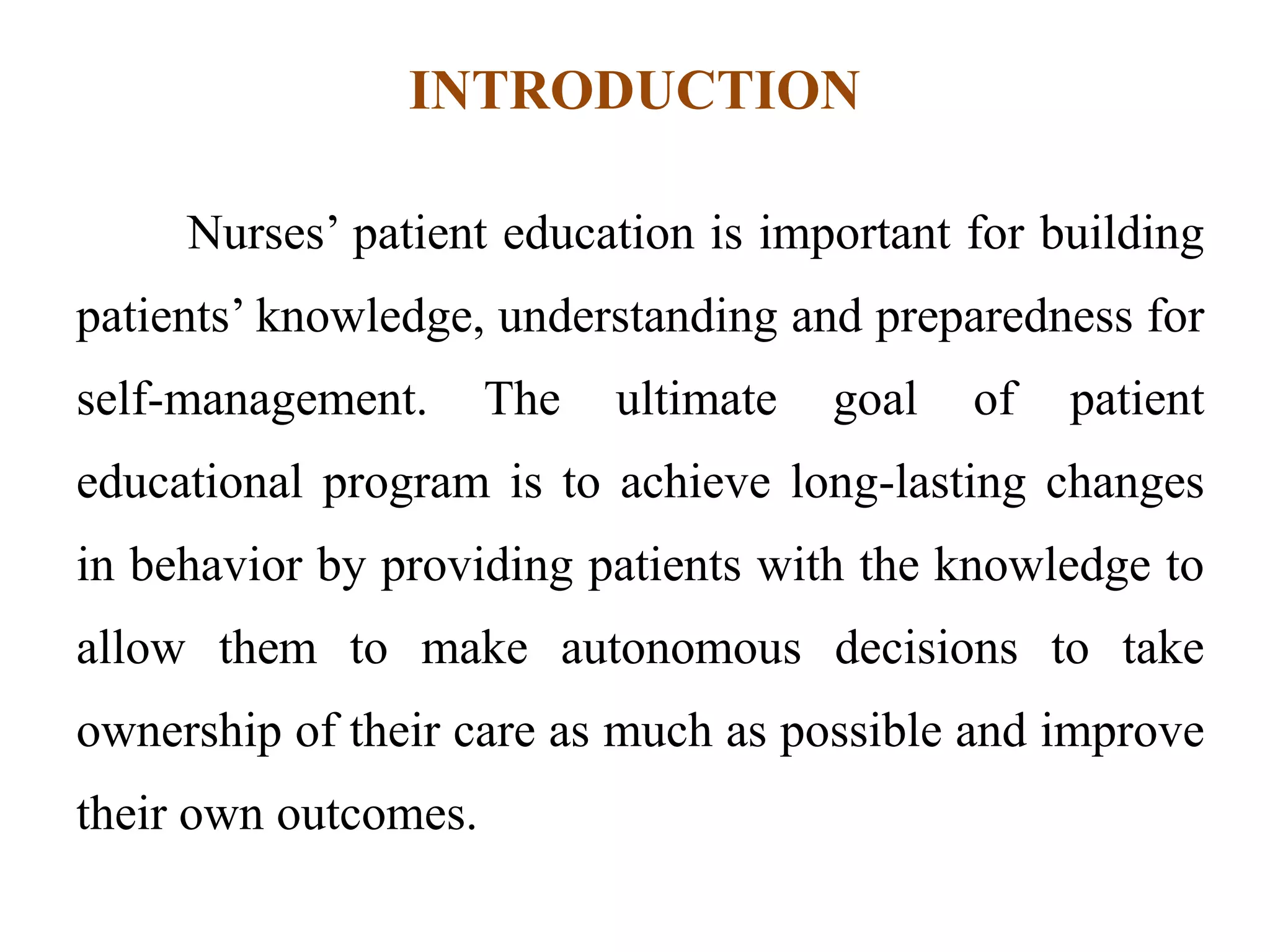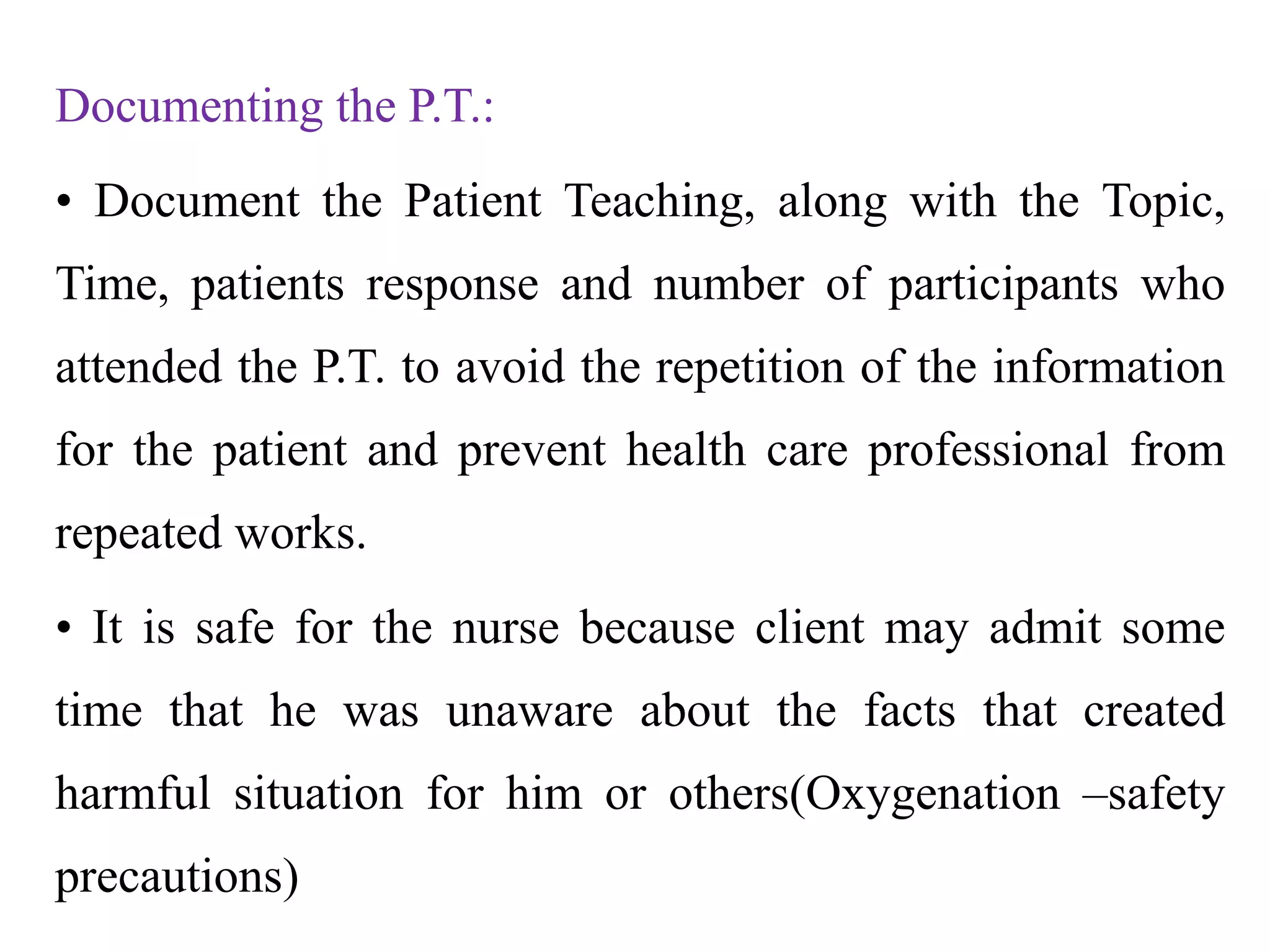The document discusses the critical role of patient education in healthcare, emphasizing its importance for patient self-management, informed decision-making, and improved health outcomes. It outlines the responsibilities of healthcare providers, especially nurses and family physicians, in educating patients about their health, treatment plans, and lifestyle modifications to prevent chronic illnesses. The process of patient education involves assessing patient needs, creating learning objectives, and using various teaching strategies to ensure effective communication and understanding.













































































































